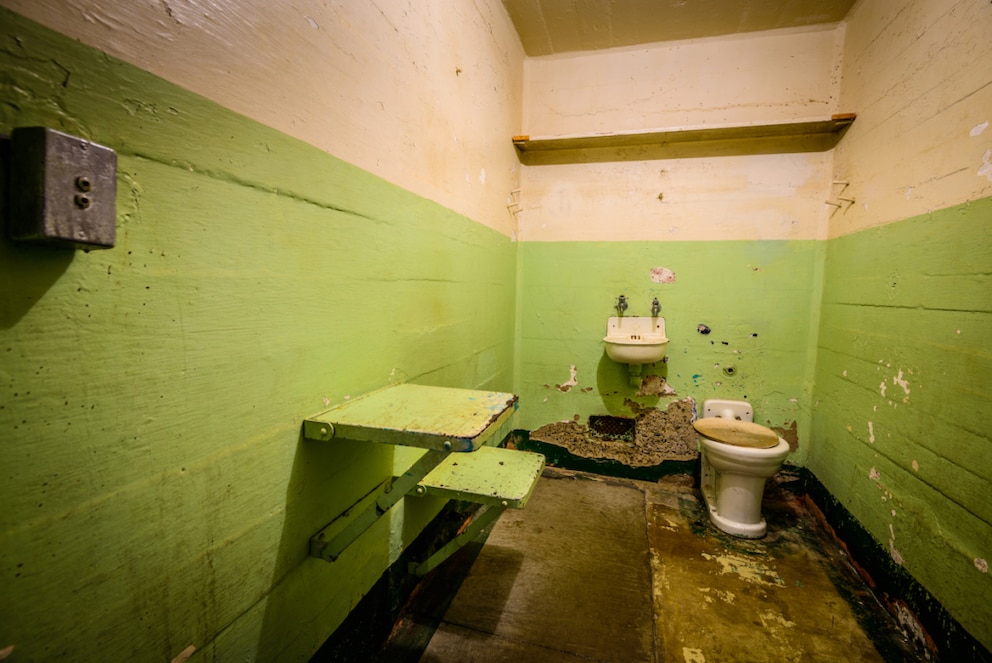May 7, 2025, 2:13 pm | Read time: 4 minutes
Alcatraz was long considered the most notorious maximum-security prison in the United States and became world-famous through films after its closure in 1963. Today, Alcatraz is a popular tourist attraction, but perhaps not for much longer. President Donald Trump announced plans to expand the prison and reopen it for its original purpose.
Some call Alcatraz the “Rock of Despair,” others the “Island of the Devil.” Especially those who had to spend uncomfortable years on the prison island off the coast of San Francisco. Al Capone, for example. The famous U.S. criminal had five years to reflect on his crimes in Alcatraz. However, he probably mostly thought about how to escape from the island. No one succeeded in escaping from the prison, which was established in 1933 and closed in 1963. Alcatraz was considered escape-proof.
As reported by sources such as the Tagesschau, U.S. President Donald Trump now apparently plans to reactivate and expand the former high-security prison. He announced this on his platform Truth Social. How realistic and feasible these plans are remains uncertain.
Overview
Name and History of Alcatraz
Alcatraz got its name in the 16th century when the first Spaniards arrived on the 500-meter-long and up to 41-meter-high island. They discovered so many brown pelicans that they named the island after the birds. Later, the bedrock (“The Rock”) served as a fortification before it was converted into a prison during the American Civil War and then into a high-security prison in 1933.
The island was well chosen for this purpose. Although it is only about one and a half kilometers from the mainland and San Francisco, this distance has its challenges. The water is icy cold, and there are dangerous currents. It was the perfect place to house hardened criminals—those who had stood out in other prisons for their extreme violence or constant escape attempts. 1,576 prisoners were held in Alcatraz between 1933 and 1963, with a maximum of 250 at any one time.

The word “uncomfortable” only begins to describe a stay in the prison, which lasted an average of ten years. The cells, where inmates spent 18 to 23 hours a day, were only 1.50 by 2.70 meters in size and contained nothing but a sink, a toilet, and a bed.
Work as a Privilege
Work was a privilege that had to be earned. Newspapers, radio, or television were not freely available, and visits were allowed only once a month. The only luxury was warm showers, and even those were provided only to prevent escape-minded inmates from acclimating to the icy sea water around the island. Rehabilitation of inmates was not on the agenda.
Work for the inmates included tasks in the laundry or kitchen. For leisure, they had access to a library and musical instruments. Occasionally, movies were shown, and on weekends, prisoners could play baseball or chess before being locked back in their cells for many hours.
36 Prisoners Attempted Escape
Thirty-six people tried to escape these conditions—through tricks or violence. They were unsuccessful: 23 were caught within an hour, seven were shot, and at least three drowned. The fate of the others is unknown, but none of the escapees were ever seen again.
An escape in 1962 was so spectacular that it served as the basis for the film “Escape from Alcatraz” starring Clint Eastwood. Three men built a raft from raincoats and plunged into the sea after escaping through a ventilation shaft. Whether they survived or drowned is unknown. Other films inspired by Alcatraz include “Murder in the First,” “The Rock,” and “Point Blank.” What the inmates couldn’t achieve was eventually accomplished by the saltwater: It damaged the structure so much that the costs for Alcatraz became too high, leading to the prison’s closure in 1963.


Europe’s Last Penal Colony Is Located on the Island of Gorgona.

These 11 museums are terrifying!

The Dreadful Story of This Tree in Cambodia
Today the Island is a Museum
Five years later, Native Americans occupied the island to draw attention to the unlawful land seizure by whites in California. They stayed for almost two years until the FBI cleared the island. Today, Alcatraz is a museum that commemorates its time as a prison and the occupation—and can easily compete as a tourist attraction with sights like the Golden Gate Bridge or the Cable Cars. The museum is managed by the National Park Service.
Many of the original buildings still stand, and some cells have been set up as if someone were living in them. The guards’ quarters, the dining hall, and the prison yard are accessible. Visitors can also listen to inmates’ experiences. The island is reached by ferry from San Francisco.
(Text contribution: Silke Böttcher)

